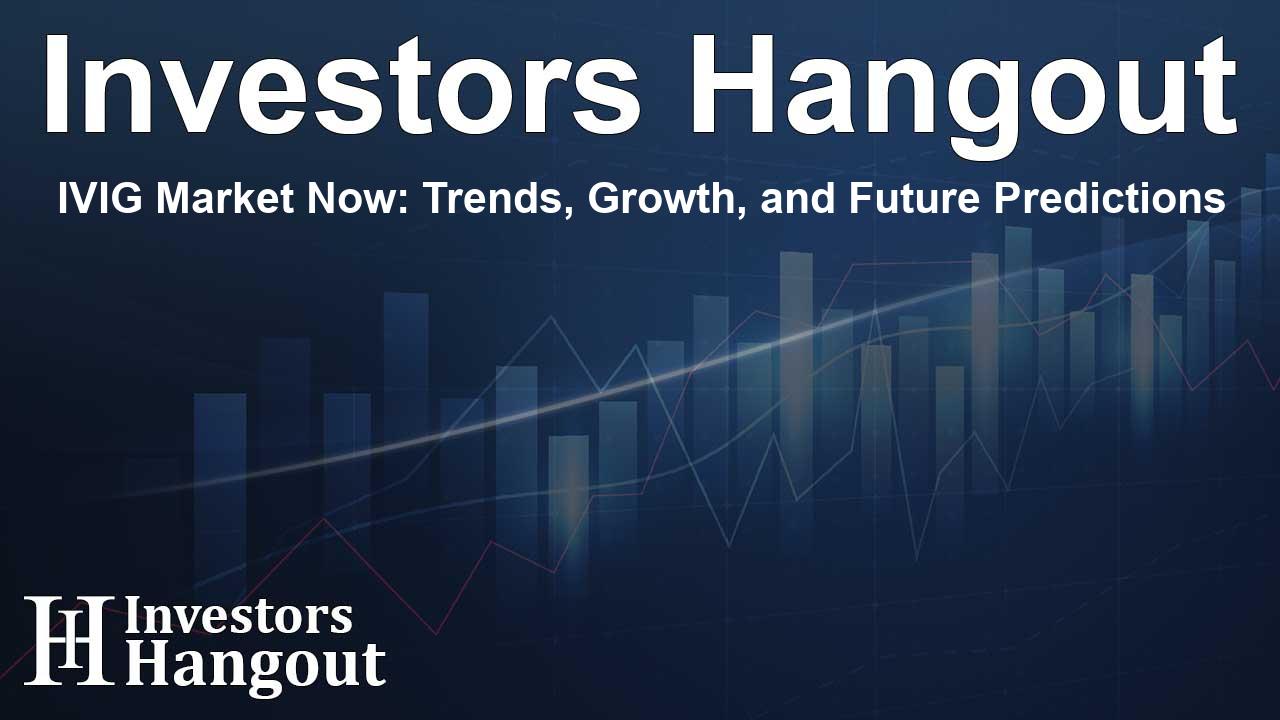IVIG Market Now: Trends, Growth, and Future Predictions

The Growth of the IVIG Market
The intravenous immunoglobulin (IVIG) market is witnessing considerable growth, fueled by a rising incidence of autoimmune diseases, immune deficiencies, and neurological disorders. Innovations in biotechnology and a heightened focus on personalized medicine are paving the way for advancements in IVIG treatments, ensuring that patients receive more effective and tailored healthcare options.
Key Insights from the IVIG Market Analysis
Recent analyses indicate that the total market size for IVIG across major regions is projected to experience significant growth by 2034. Various factors contribute to this surge:
- Increased market demand driven by the prevalence of chronic inflammatory demyelinating polyneuropathy (CIDP).
- Revenues for leading therapies such as BIVIGAM, which recently reported approximately USD 50 million in revenue.
- Expanding patient populations affected by immune-related disorders.
- Competitive landscape with significant contributions from companies like ADMA Biologics, Grifols Therapeutics, and Takeda Pharmaceuticals.
Understanding the Dynamics of IVIG Treatment
The IVIG market is shaped by the interplay of demand and supply dynamics. As the number of patients requiring therapies for various autoimmune and inflammatory disorders increases, manufacturers face significant challenges, particularly due to the complexities involved in sourcing raw materials such as human plasma. The need for optimizing production processes is paramount, as the costs associated with plasma collection are on the rise, impacting overall IVIG pricing.
However, advancements in purification techniques and manufacturing processes are anticipated to enhance production efficiency, potentially stabilizing costs in the long term. Additionally, ongoing interest in alternative immunoglobulin therapies, including recombinant and synthetic options, presents both competition and opportunities for the existing IVIG treatments.
Emerging Therapies and Market Opportunities
A variety of therapies are emerging within the IVIG market, with promising advancements. Notable therapies include:
- ASCENIV, designed for individuals with known immunodeficiencies.
- BIVIGAM, which supports treatment for those with primary immunodeficiency.
- GAMUNEX-C, recognized for its effectiveness in treating a range of autoimmune diseases.
- OCTAGAM, marketed for individuals requiring concentrated immunoglobulin treatments.
- New entrants, such as the recently launched ALYGLO, changes the landscape by offering innovative IVIG options.
Challenges Facing the IVIG Market
Despite the promising growth and expansion, the IVIG market faces several pressing challenges. One major issue is the persistent imbalance between the supply and demand for human plasma. The difficulties involved in harvesting and processing plasma not only lead to costs increasing but also create challenges in maintaining a consistent supply to meet patient needs. Furthermore, the requirement for IVIG to be administered in clinical settings by healthcare professionals adds additional burdens on healthcare systems.
Regulatory and Reimbursement Factors
Regulatory frameworks and reimbursement policies are crucial in shaping the IVIG market dynamics. Variations in product regulations across different regions can significantly influence market accessibility and the adoption rate of new therapies. Efforts towards clinical research are ongoing, focusing on broadening indications for IVIG and improving patient outcomes, further driving demand.
The Future of IVIG: A Comprehensive Market Overview
IVIG represents a critical component of therapeutic options for individuals with immunodeficiencies and autoimmune disorders. The continued evolution of approved therapies, such as PRIVIGEN, further underscores the growing complexity and sophistication of treatment options available to patients. Additionally, with ongoing research into innovative therapeutic pathways, the future of IVIG is filled with potential for new products that can significantly change the landscape of how these conditions are managed.
Frequently Asked Questions
What is IVIG used for?
IVIG is primarily used to treat patients with immune deficiencies, autoimmune diseases, and certain inflammatory conditions.
Why is the IVIG market growing?
The growth of the IVIG market is attributed to the increasing prevalence of autoimmune disorders, advancements in biotechnology, and rising awareness of immunodeficiencies.
What are the challenges in the IVIG market?
The major challenges include supply chain issues related to human plasma, increasing production costs, and regulatory hurdles.
What companies are leading in the IVIG market?
Key players in the IVIG market include ADMA Biologics, Grifols Therapeutics, and Takeda Pharmaceuticals, among others.
Are there new therapies emerging in the IVIG market?
Yes, new therapies like ASCENIV and ALYGLO are emerging, targeting specific patient needs and expanding the range of treatment options.
About The Author
Contact Olivia Taylor privately here. Or send an email with ATTN: Olivia Taylor as the subject to contact@investorshangout.com.
About Investors Hangout
Investors Hangout is a leading online stock forum for financial discussion and learning, offering a wide range of free tools and resources. It draws in traders of all levels, who exchange market knowledge, investigate trading tactics, and keep an eye on industry developments in real time. Featuring financial articles, stock message boards, quotes, charts, company profiles, and live news updates. Through cooperative learning and a wealth of informational resources, it helps users from novices creating their first portfolios to experts honing their techniques. Join Investors Hangout today: https://investorshangout.com/
The content of this article is based on factual, publicly available information and does not represent legal, financial, or investment advice. Investors Hangout does not offer financial advice, and the author is not a licensed financial advisor. Consult a qualified advisor before making any financial or investment decisions based on this article. This article should not be considered advice to purchase, sell, or hold any securities or other investments. If any of the material provided here is inaccurate, please contact us for corrections.
